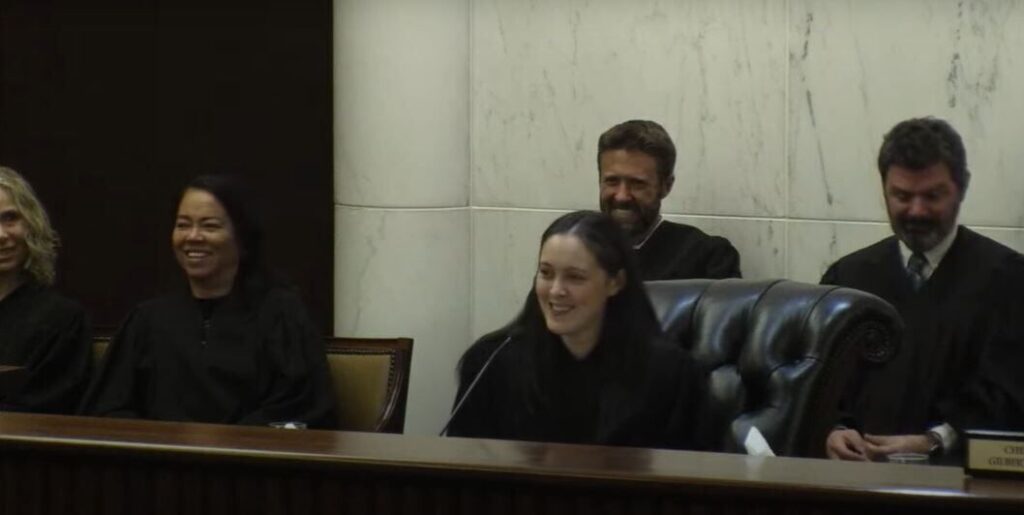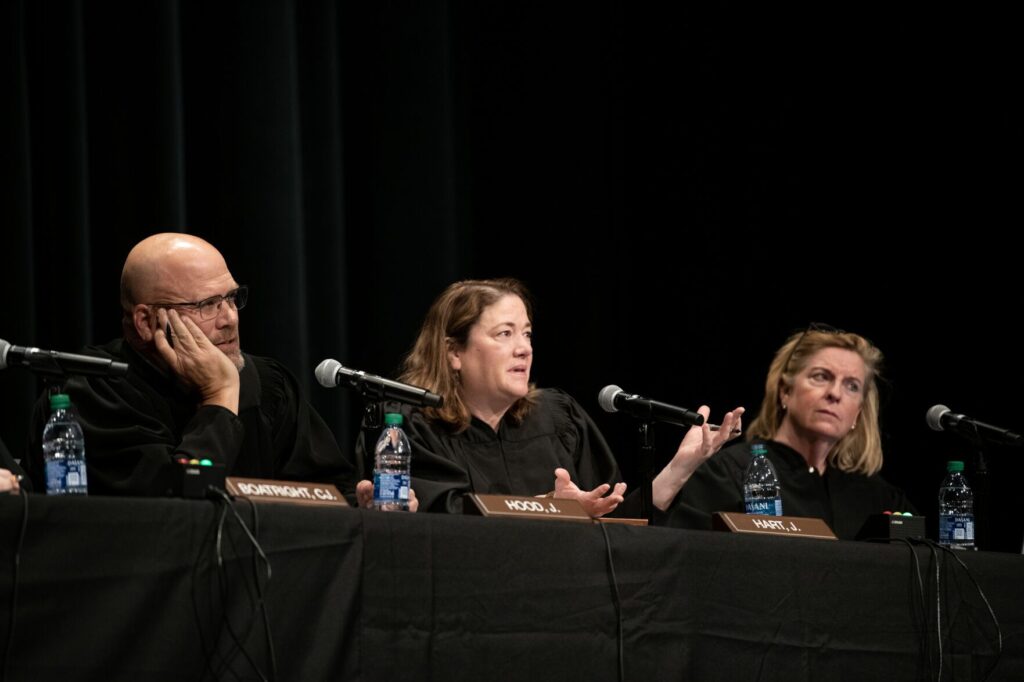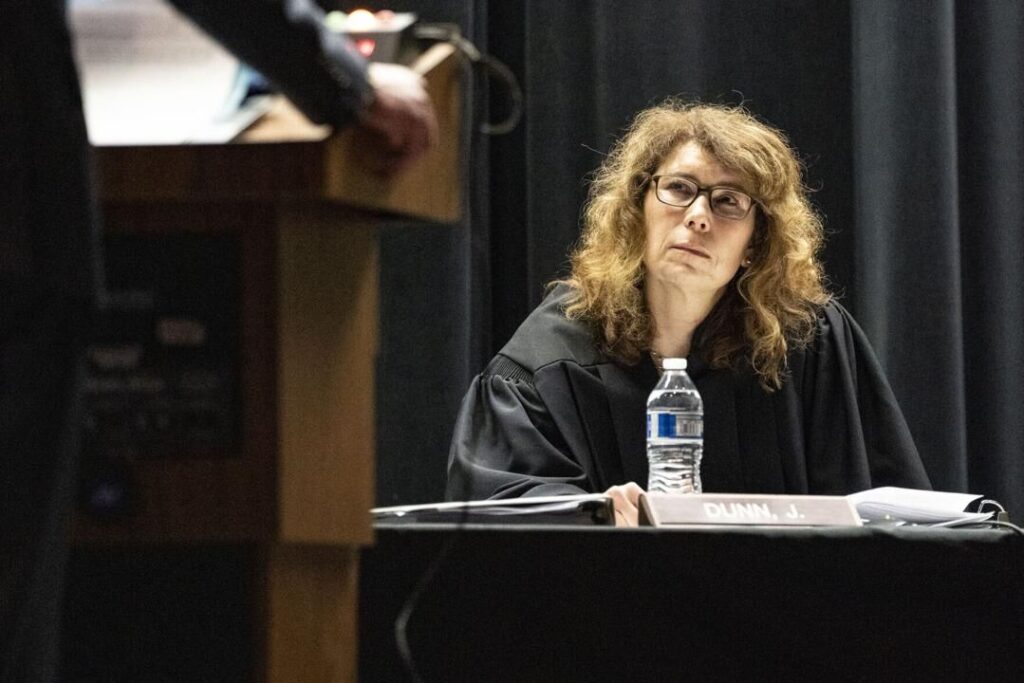Corrections official may not sue supervisor for race-related hostile work environment, 10th Circuit says

A corrections officer who was called the N-word and a “Black bitch” and received death threats from the inmate who attacked her may not sue her supervisor for a hostile work environment, the federal appeals court based in Denver determined on Thursday.
People who work in jails or prisons regularly face a certain level of hostile behavior, a three-judge panel of the U.S. Court of Appeals for the 10th Circuit concluded. Therefore, the racism and intimidation that Latara Durand experienced at the Lookout Mountain Youth Services Center was not so problematic that it violated her civil rights.
“Because this case arises from a corrections environment and involves evidence of isolated racial slurs, with facially-neutral threats and gestures not shown to be the product of racial hostility, we conclude that a reasonable jury could not find that Durand’s work environment was infected with pervasive racial harassment,” wrote Senior Judge Mary Beck Briscoe in the panel’s April 21 order.
Steven L. Murray, an attorney for Durand, believed that a jury should have been allowed to decide whether all of the circumstances Durand faced added up to a hostile work environment.
“No Black woman in the workplace deserves to be subjected to words such as the N-word and ‘Black bitch’ and threats in any setting without it being addressed and remedied,” he said.
The 10th Circuit’s decision was unpublished, meaning it is not intended to set a precedent. Civil rights and employment discrimination lawyer Felipe Bohnet-Gomez said he believed an employee in Durand’s position would have been able to pursue her lawsuit had she worked in an industry other than corrections.
The judges’ perceptions of how much racism or threatening behavior in prisons is too much, Bohnet-Gomez added, guided their evaluation.
“It reflects courts’ reluctance to open the door to hostile work environment claims on the basis of inmates’ behavior, without some special circumstances,” he said.
Durand worked at the Lookout Mountain juvenile detention center in Golden and her duties were similar to those of a prison guard. According to her lawsuit, a 15-year-old inmate identified only as John Doe hit her from behind on May 22, 2017. Physicians treated her for a mild traumatic brain and neck injury and she did not work for a week afterward.
Upon her return to work, Durand was stationed at the control desk, which required her to check on inmates every 15 minutes, including Doe. He would reportedly stand at the window to his room and glare at her. Durand heard that Doe was saying he would kill her if she pressed charges against him for the assault.
Doe also called her racial epithets. According to Durand, when she brought her concerns to a senior supervisor, Maricela Shull, there was no effort to ensure that Durand could avoid seeing Doe in the course of her duties. Durand resigned less than two months after the attack.
“I did not feel safe at Lookout Mountain anymore,” Durand said in a deposition. “I was having anxiety attacks there often, and I just – I just didn’t feel any support.”
Durand sued for racial discrimination and a hostile work environment under federal law. In April of last year, U.S. District Court Senior Judge Lewis T. Babcock sided with the defendant, Shull. Durand had not plausibly alleged she was treated differently from other employees in her position because of her race, Babcock concluded in dismissing her discrimination claim.
As for the hostile work environment, Durand needed to show that a jury could find her workplace was permeated with “severe or pervasive” harassment, such that it altered the course of her employment. Babcock found that “a few” racially-motivated incidents did not reach that that threshold in Durand’s case.
“There is no doubt that Plaintiff’s work environment was frightening and distressful, but Plaintiff has not shown that this was due to discrimination or racial animus on the part of Defendants,” he wrote. “The evidence before me shows only that the inherent nature of the work and the actions of Doe made for a harsh and stressful work environment.”
On appeal, Durand only challenged Babcock’s treatment of her hostile work environment claim. She sought to hold Shull liable for failing to take reasonable steps to protect her from Doe’s conduct, Durand’s lawyers wrote. Even in a correctional setting, the combination of gestures, threats, slurs and the assault were all factors a jury could decide merited a response from Durand’s supervisors.
“Ms. Durand has a constitutional right not to be subjected to a racially hostile work environment,” wrote Durand’s attorneys to the 10th Circuit. “Normal job stress does not require Ms. Durand to confront a much stronger and physically larger inmate every fifteen minutes, who has violently assaulted her, threatened to kill her, and continue to assault her, while calling her a Black Ass (N-word) and a Black Bitch.”
Briscoe, in the 10th Circuit panel’s decision, did not believe such conduct amounted to severe or pervasive racial harassment. Doe, she wrote, was apparently motivated by the pending assault charges against him rather than Durand’s status as a Black woman. As such, there was no violation of Durand’s constitutional rights.
Even if there were, she added, qualified immunity would apply to Shull. Qualified immunity shields government employees from liability unless they violate a person’s clearly-established legal rights. While the intent is to prevent lawsuits when officials are not on notice that their conduct is unreasonable, courts in practice require there to be a prior case under very similar circumstances to find that immunity does not apply.
In Durand’s case, there was no previous decision where the 10th Circuit had established that a corrections supervisor could be held responsible for an inmate’s harassing behavior connected to their assault of an employee.
In a separate, single-sentence opinion, Judge Veronica S. Rossman wrote that she agreed with the decision to uphold the lower court’s dismissal of the case, but only because Shull’s actions were not clearly unreasonable.
The case is Durand v. Shull.














